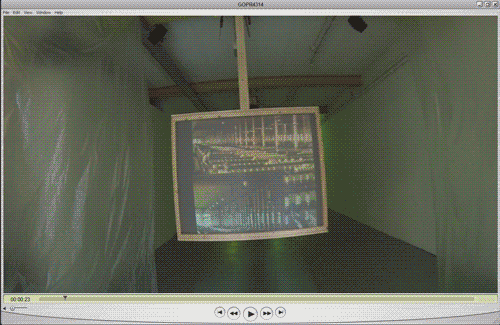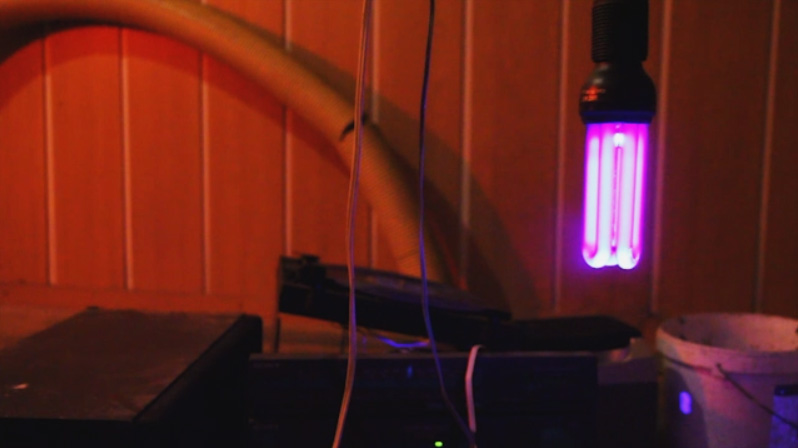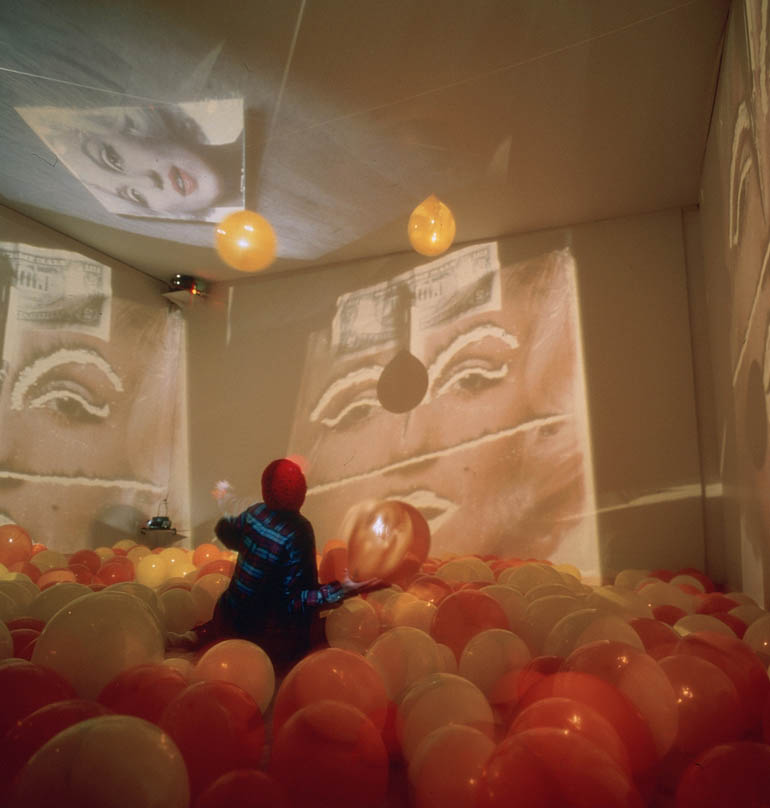User:Zigbe/GradProposal/GradProposal/drafts
First Draft
Sistema Operacional (working title)
{Tentative Title}
My research starts inspired by my relation with different operational systems since early 2000 and the notions I've developed on how those systems have been evolving. Specially inspired by Mac OS X and Google development since early 2000. From this starting point I raised the question “in cybernetic terms, what can physically represent an operational system?”. I use this question to help me observing the tools of our everyday life that help making our lives “easier”, but at the same time educate us in a certain way. Tools such as smart phones, web searches, laptops, tablets are developed in accordance to social and economical needs and are embedded with the political interests of those behind its creation. For example the limited speeds of upload in comparison to the download speed delivered by our ISP (internet Service Provider) shows clearly that the net is not intended for sharing but downloading. Its limited bidirectional exchange makes of it an extension of cable TV with the difference that we are able to interact with the content mainly by providing our personal information.
By being an artist and student in Amsterdam I happen to be moving around the city's neighborhoods in accordance to its gentrification needs. This movement gives me the chance to observe the urban transitions on those neighborhoods. Despite I have no interest in driving my research towards urbanism field, it has been interesting to draw an analogy between urban design and operational systems. Urban furniture is the design of objects in urban spaces used to manipulate citizens relationship with each other and with the city. Its invisible powers educates our relations in social conditions. In Holland urban design is very beautifully placed on the streets. Train stations are constantly changing and the systematization of movement (despite natural on everyday basis) feels like if out of a sci-fi tale. The fact that it works well for most people shades its oppressive intentions.
{Introduction}
Sistema Operacional is an audio visual installation inspired on the influence that computer's operational systems have on our behaviors. The Sistema Operacional is a technological Opera making use of objects and space elements juxtaposed by audio and moving image to create a sensorial experience for the viewer. Somatosensory System. It stretches the cinematic experience within the space with orchestrated projections, audio experiments and devices working/appearing/manifesting build up different levels of tension for the viewer. The viewer is inside the screen. The SO will consists of a series of DEVICES and a KERNEL room. It will be installed in an exhibition space intending to manipulate the experience of the viewer within the space. Devices are divided in two sub groups, environmental changes designed to manipulate one's relation with the space such as bumps on the floor, uneven staircases, barricades, stage lights, signage; and objects created or appropriated in order to support the a/v experience such as record players, audio devices, mirrors, sculptures. The first will be placed in order to control the movement of the viewer inside the space. The latter introduces three-dimensionality to the a/v content. The kernel is a room where it all meet together in one A/V piece, a technological opera, an abstract theater play where image and sound meet together. The kernel presents a “cinematic narrative” distributed in between objects, projections and sound. It highlights the invisible oppressive power of those systems in a charismatic glossy (Cocoa) form.
What's the political agenda behind an Operational System?
How technology shapes us?
What do we understand for technology?
The devices designed for the installation will be inspired by my personal speculations on how those urban furnitures might influences our behaviors in social conditions.
{Relation to previous practice}
One element which I consider to be important in my works is the experience of the moment, while the objects are laid on the space in order to support an abstract relation between the viewers and the moment. The works require openness and engagement of the viewer. It does not necessarily finds this engagement on every person, it tends to exclude the ones with predefined idea of how they should experience the work. This selection is build on a complex and unpredictable relation which isn't relate to age, level of education, class, gender or race, but openness and interest. A second element often present in my installations is some sort of temporary social structures construct. Or as Helio Oiticica describes: “Active creleisure manifestation with collective participation”... the “manifestation proposing totally new elements differing from the concept of “happening”, for the absence of what Guy Brett would call 'intelectual slapstickness' or pre-parated ideas. The elements flow-float in the search of significations that grow from themselves, not as something 'happening' but as something growing.”
Radical Software (2014), was an exhibition designed by me. With this exhibition I intended to create a perfect environment for learning and discussing. An HD/AD manifestation of information within the space. The starting point was inspired by artistic reactions to cybernetics ideas in the 70's and early 80's and the title came from a magazine created by the same time. The exhibition included a series of videos, sound and objects composed following a certain movement inside the space. Despite the space could be felt as a whole, the individual works offered entrance to be experienced individually as well. The whole cacophonic spectacle of sounds and moving images were generating the noise which I believed to be necessary to support a series of lectures. The structure was Excessive Information > Lecture > Music performance. My participation apart from organizing and designing the show was in composing the space relation and adding necessary elements which were perceived as individual works but I still rather see them as supportive devices to the whole.
On Redroom (2010), during an art residency together with other twenty artists I set myself to work eight hours a day in my studio. Everyday constructing a big scultural project without clear intentions, in the mean while “spontaneous” peformances are planed inside the space. The overworked time spent in the room creates a confusing tension on where to look at. “Art” Objects are nd experience generating confusion of where to look at to see the art but at the same time expressing the presence of the artistic intentions inside the space. By the end of the residency the room is cleaned and the electric system of the room is fixed in o
{Relation to a larger context}
Helio Oiticica is a name that echoes frequently in Brazilian Art Story but only recently I've got acquainted with his writings. On his writings about APOCALIPOPOTESIS, an event which included several other artists he mentions his work process “I would rather concentrate the creative process into what in Portuguese I call “vivencias”, and that I translate sometimes as “feelings”, but that is not an exact term, unless some explanation were made along with its quotation: they are very specific feelings, that rise with the ideas themselves and the participation in those ideas as they are communicated into propositions : they would be open feelings, that flow-float into the succession of ideas, related intimately to life processes themselves : they would be the counterpart to all oppressive structure, in the contrary : the free-felt sensations, thoughts, the profound human aspirations in their internal field of action, the feelings that are opposed to any kind of oppressive system, even those that bear in themselves diverted desublimative forms, I mean mainly to those, to which many art products are wrongly directed, or transformed into their representative way of manifestation or objectivation.”
Other two works important to mention is QUASI-CINEMA, again by Helio Oiticica and Hotel Palenque by Robert Smitson.
References:
APOCALIPOPOTESIS (APOCALIPOPOTESE) – Helio Oitica
Cybernetic Hipothesis – Tiqqun
Cypherpunks: Freedom & the Future of the Internet – Julian Assange +++
Neuromancer – William Gibson
The Parasite – Michel Serres
Protocol: How Control Exists after Decentralization – Alexander Galloway
T.A.Z. - Hakin Bay
Second Draft
Sistema Operacional: The Invisible Power Structure of things (working title)
{project}
Sistema Operacional is a technological Opera, an inter-media audio/visual installation making use of space interferences juxtaposed by sound and moving image to create a sensory experience for the viewer. Somatosensory System. The Opera is an abstract/satyric/dramatic/horrific tale of the political powers of design. The opera is performed by machines and conducted by an Apple computer. It highlights the invisible oppressive power of those systems in a charismatic glossy (Cocoa) form.
The installation should occupy a room by itself. Either a room which people cross – with doorways on both sides – or a contained space – one way in entrance. The center point of the installation is an Apple computer connected to a router. The computer will send information to activate and control other equipments in the room by using BASH programing and Automation tools either through network cables or wifi. The screen of the computer shows the processes. CD and DVD players, speakers, projectors and screens are composed around the space.
{intro}
It's the invisible power structures behind what we consume that scares me the most. How we are constantly being shaped by the tools available to us, by the media we consume or by the spaces we navigate through unaware of its influences. Tools are designed to help making our lives “easier”, but at the same time they educate us. Tools are developed in accordance to social and economical needs and are embedded with the political interests. For example the limited speeds of upload in comparison to the download speed delivered by our ISP shows clearly that the net is not intended for sharing but downloading. Its limited bidirectional exchange makes of it an extension of cable TV with the difference that we are able to interact with the content mainly by providing our personal information. Another example is how Urban planing is used to manipulate citizens relationship with each other and with the city. Its invisible powers educates our relations in social conditions. Train stations are constantly changing, a eternal feedback of improvement and systematization of movement. {add relation between host and guest by Michel Serres???}
describe it how will the equipment be used? what will the viewer experience what type of space can it occupy lights? how will people pass through the space?
{Relation to previous practice}
One element which I consider to be important in my works is the experience of the moment, while the objects are laid on the space in order to support an abstract relation between the viewers and the moment. The works require some sort of openness and engagement of the viewer. It tends to exclude the ones with predefined idea of how they should experience the work. This selection is build on a complex and unpredictable relation which isn't relate to age, level of education, class, gender or race, but openness and interest. A second element often present in my installations is some sort of temporary social structures construct. Or as Helio Oiticica describes: “Active creleisure – creative leisure, which differs from passive leisure - manifestation with collective participation”... the “manifestation proposing totally new elements differing from the concept of “happening”, for the absence of what Guy Brett would call 'intelectual slapstickness' or pre-parated ideas. The elements flow-float in the search of significations that grow from themselves, not as something 'happening' but as something growing.”

Radical Software (2014), was an exhibition designed by me. With this exhibition I imagined to create a perfect environment for learning inspired by TV as a source of education. The exhibition was an HDADD manifestation of information within the space. The exhibition included a series of videos, sound and objects composed inside the space. Despite the space could be experienced as a whole, the individual works offered entrance to be experienced individually as well. The whole cacophonic spectacle of sounds and moving images were generating the noise which I believed to be necessary to support a series of lectures which were followed by music performances. Apart from organizing and designing the show my participation was in composing the space. Few elements were added which were perceived as individual works but I still rather see them as supportive devices to the whole.

http://eee.ehcaetano.com/selected/red_room_analfonaumismo/

http://eee.ehcaetano.com/selected/RED_ROOM.mp4
On Redroom (2010), was part of an art residency together with other twenty artists. Everyday I constructed a new big sculptural project without any clear intentions, eventually provoked planed “spontaneous” performances inside the space. The overworked time spent in the room creates a confusing tension on where to look at to see art, but at the same time expressing the presence of the artistic intentions inside the space. By the end of the residency the room is cleaned and the electric system of the room is fixed, leaving only essential traces of the presence, a light switch and a lamp.
{Relation to a larger context}
Helio Oiticica is a name that echoes frequently in Brazilian Art Story but only recently I've got acquainted with his writings. On his writings about APOCALIPOPOTESIS, an event which included several other artists he mentions his work process “I would rather concentrate the creative process into what in Portuguese I call “vivencias”, and that I translate sometimes as “feelings”, but that is not an exact term, unless some explanation were made along with its quotation: they are very specific feelings, that rise with the ideas themselves and the participation in those ideas as they are communicated into propositions : they would be open feelings, that flow-float into the succession of ideas, related intimately to life processes themselves : they would be the counterpart to all oppressive structure, in the contrary : the free-felt sensations, thoughts, the profound human aspirations in their internal field of action, the feelings that are opposed to any kind of oppressive system, even those that bear in themselves diverted desublimative forms, I mean mainly to those, to which many art products are wrongly directed, or transformed into their representative way of manifestation or objectivation.”
Other two works important to mention is QUASI-CINEMA, again by Helio Oiticica and Hotel Palenque by Robert Smithson.

References:
APOCALIPOPOTESIS (APOCALIPOPOTESE) – Helio Oitica
Cybernetic Hipothesis – Tiqqun
Cypherpunks: Freedom & the Future of the Internet – Julian Assange
Neuromancer – William Gibson
The Parasite – Michel Serres
Protocol: How Control Exists after Decentralization – Alexander Galloway
T.A.Z. - Hakim Bay
